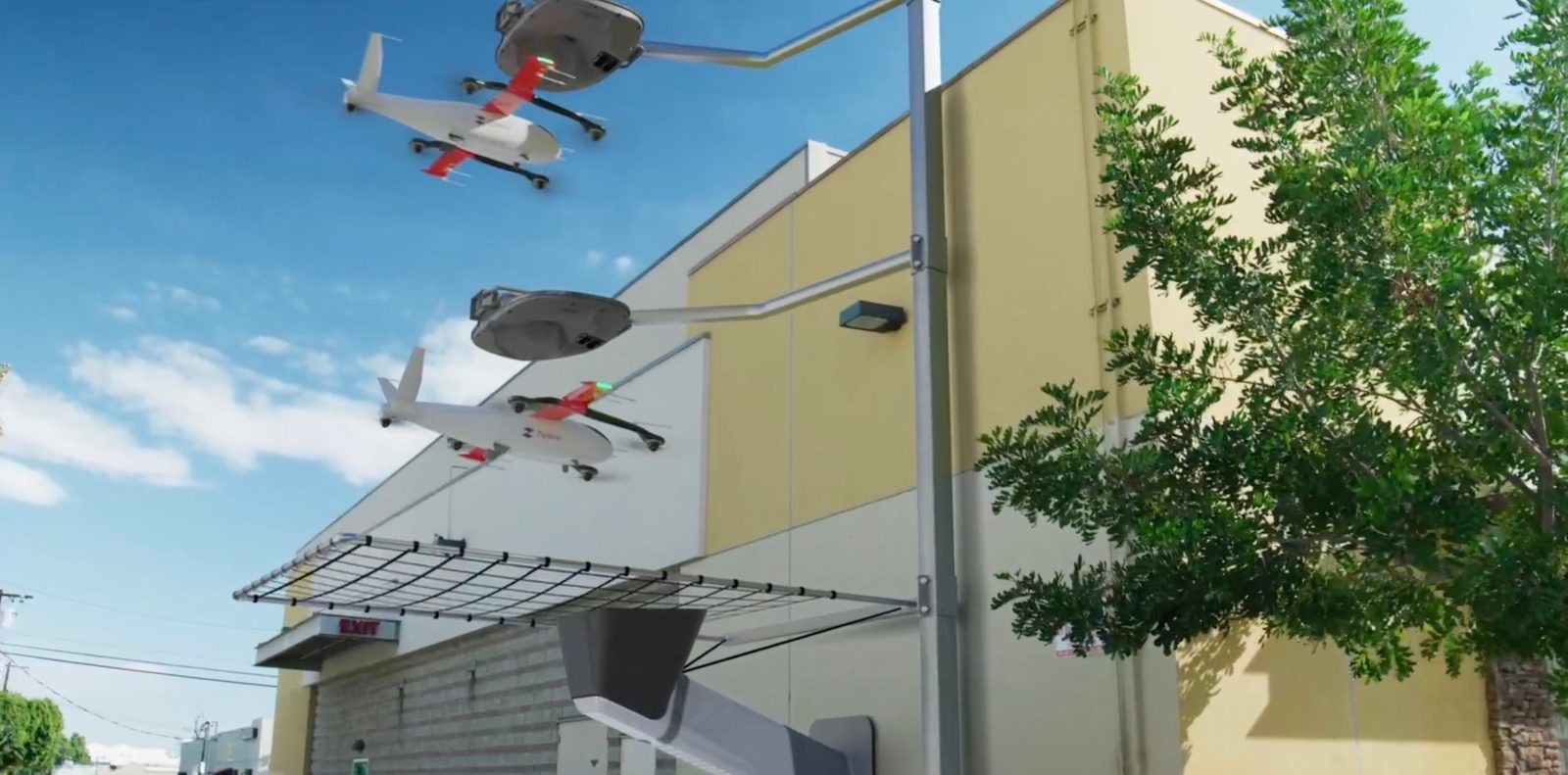
World-leading instant logistics and drone delivery company Zipline has unveiled a major revision of its commercial transport network, featuring an entirely reconceived transport UAV and an equally autonomous payload droid that – once lowered to client destinations by a winch – can guide itself to an area for unloading as small as a patio table or steps up to a house.
South San Francisco-based Zipline presented its revamped home delivery system pairing the new fixed-wing Platform 2 (P2) drone with the final delivery droid, whose own onboard smart tech and internal propellers allow it to position over and touch down on even the smallest of spaces available at client destinations.
The company says both vehicles are practically silent, with the main UAV – known as a “Zip” – expected to make home deliveries up to 10 times faster than automobiles and complete 10-mile deliveries in about 10 minutes.
The newly revealed network not only represents a major update from the company’s previous drones – which were both larger and launcher-shot – but also represents a breakout from point-to-point delivery operations similar to the strategy Wing Aviation announced last week.
Read more: Wing Delivery Network frees drones from point-to-point operation for faster, flexible service
Each P2 Zip drone boasts a 10-mile radius flight capacity while carrying six to eight pounds. That means that, when preferable, the UAVs can continue making round-trip deliveries by returning to the dual-source Zipline docking and recharging stations integrated into the facilities of partnering businesses.
But when the activity requires, those UAVs can also make up to 24-mile one-way trips, then replenish their batteries at the closest company stations before picking up whatever order is awaiting transport to the nearest client company. That enables a flexible, dynamic network of craft capable of adapting to the ebbs and flows of incoming orders and serving businesses and ordering customers faster.
Read: Zipline, Jumia forge African e-commerce drone delivery partnership
After flying at more than 300 feet above ground to their destinations, the new Zipline drones will hover quietly at the same altitude while winching the payload down to what the maneuvering delivery droid ensures will be a precise handoff in even the tightest of spaces.

Zipline has already signed on an array of companies waiting to use its new network. Those include Sweetgreen, Michigan Medicine, Intermountain Health, MultiCare Health System, and the government of Rwanda – the company’s first medical services client that now also plans to use the home delivery operation for urban aerial last-mile transport to homes, hotels, and health facilities in the capital Kigali and elsewhere in the country.
“Over the last decade, global demand for instant delivery has skyrocketed, but the technology we’re using to deliver is 100 years old,” said Zipline CEO Keller Rinaudo Cliffton at the unveiling. “We’re still using the same 3,000-pound, gas combustion vehicles, driven by humans, to make billions of deliveries that usually weigh less than five pounds. It’s slow, it’s expensive, and it’s terrible for the planet. Our new service is changing that and will finally make deliveries work for you and around your schedule. We have built the closest thing to teleportation ever created – a smooth, ultrafast, convenient, and truly magical autonomous logistics system that serves all people equally, wherever they are.”
Read: Zipline discusses its newly awarded global drone delivery innovation
Zipline will now use about 100 of the new Zip home delivery drones to undertake high-volume trial flights involving more than 10,000 test sorties before rolling out the services later this year with partner businesses and end-user customers, who will place orders through Zipline’s marketplace.
In more than seven years of drone delivery operations, Zipline crafts have made over 500,000 autonomous commercial flights covering more than 40 million miles – equivalent to 80 round trips between the Earth and moon. The company says its current activities, combined with the growth expected from the new P2 network, should allow it in 2023 to surpass the output of all previous years combined.
FTC: We use income earning auto affiliate links. More.



Comments